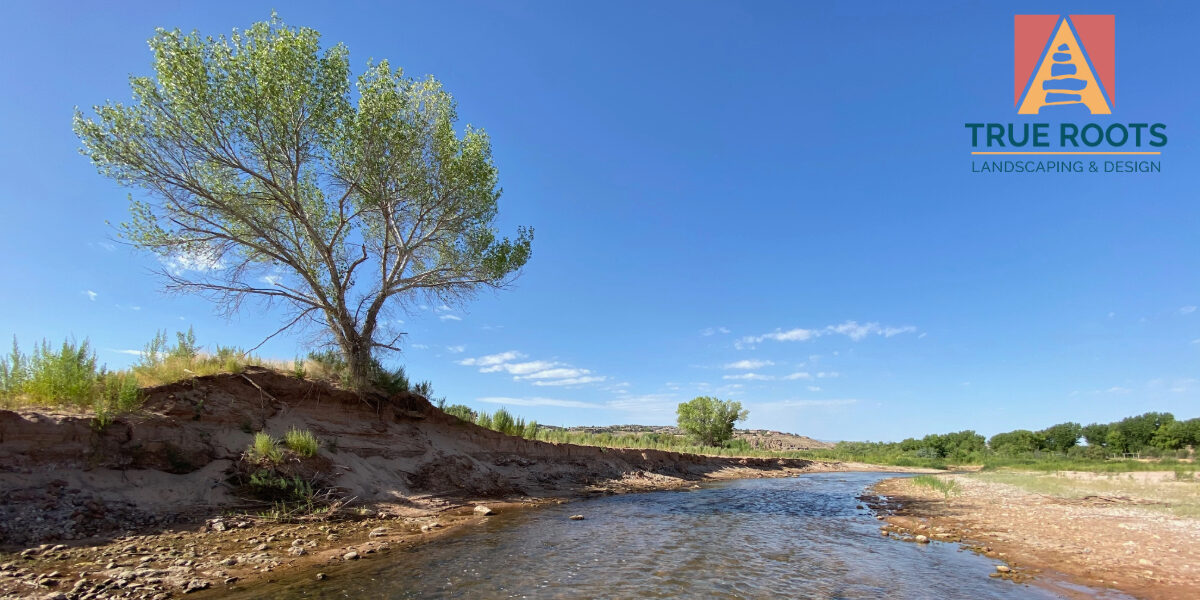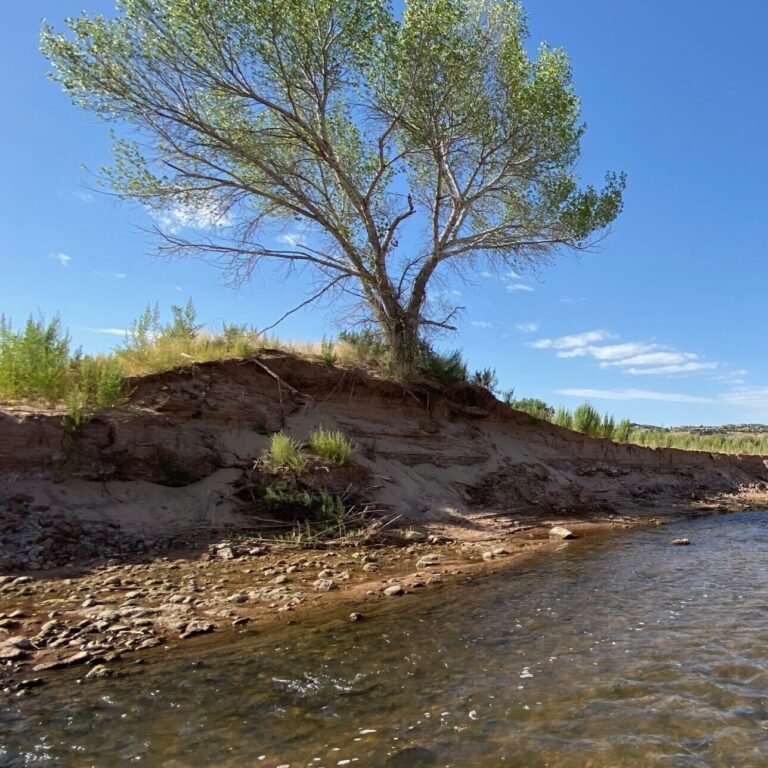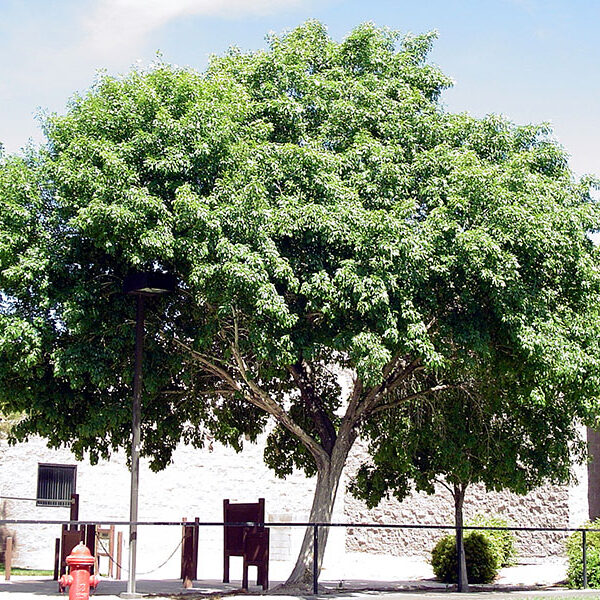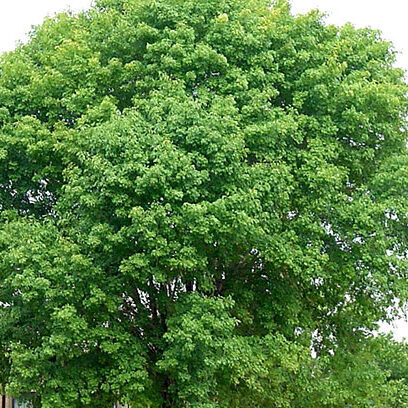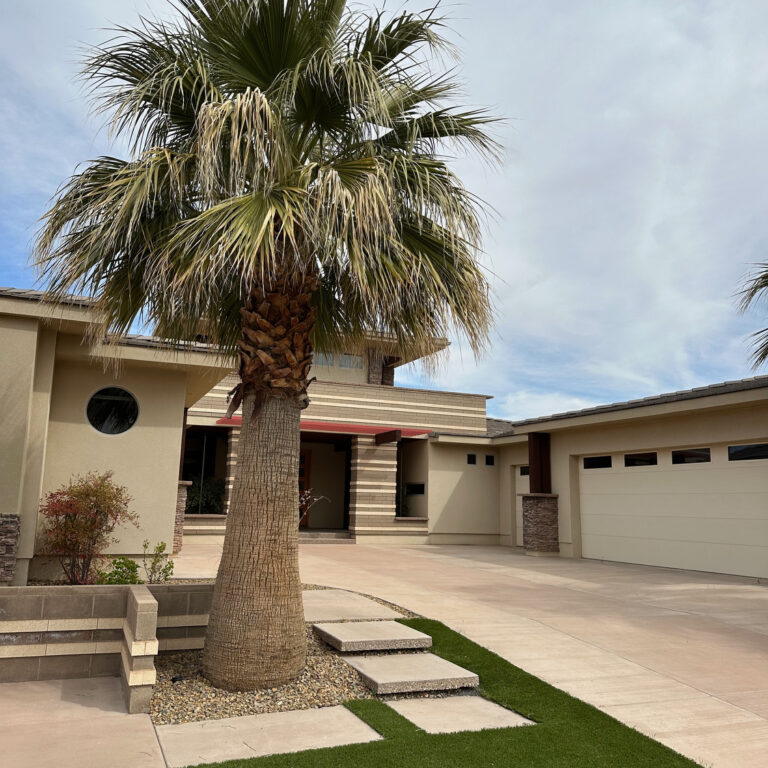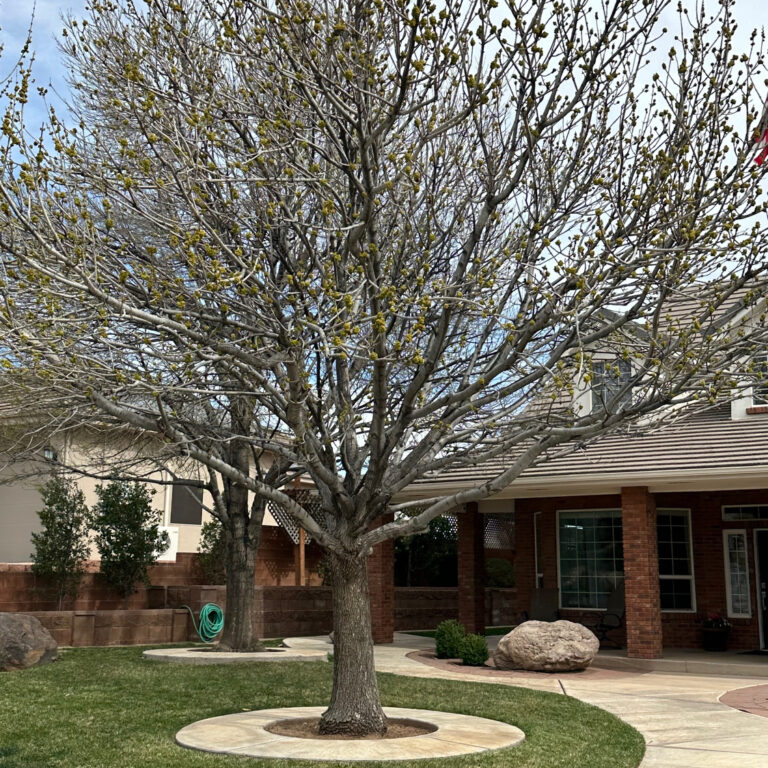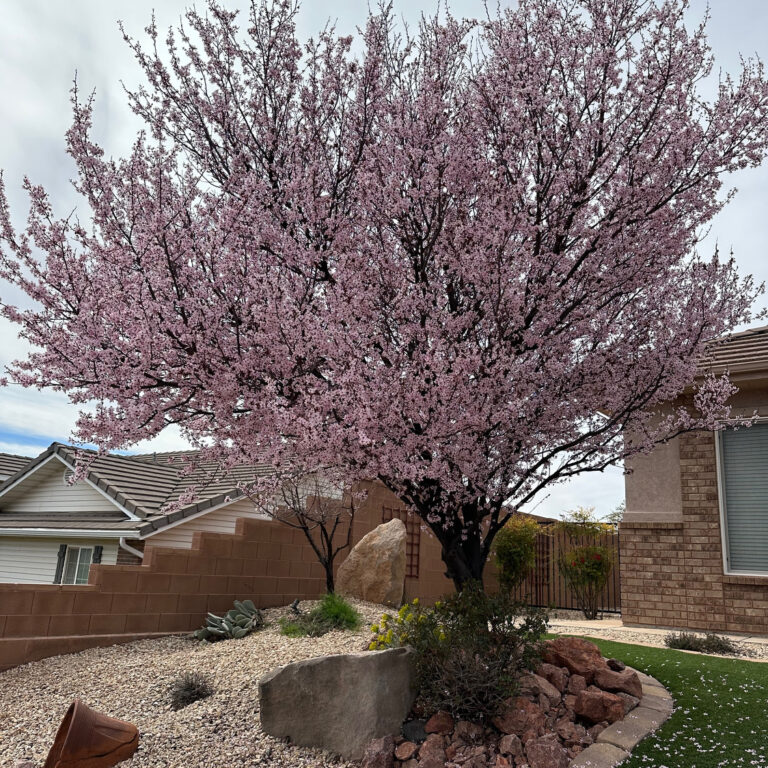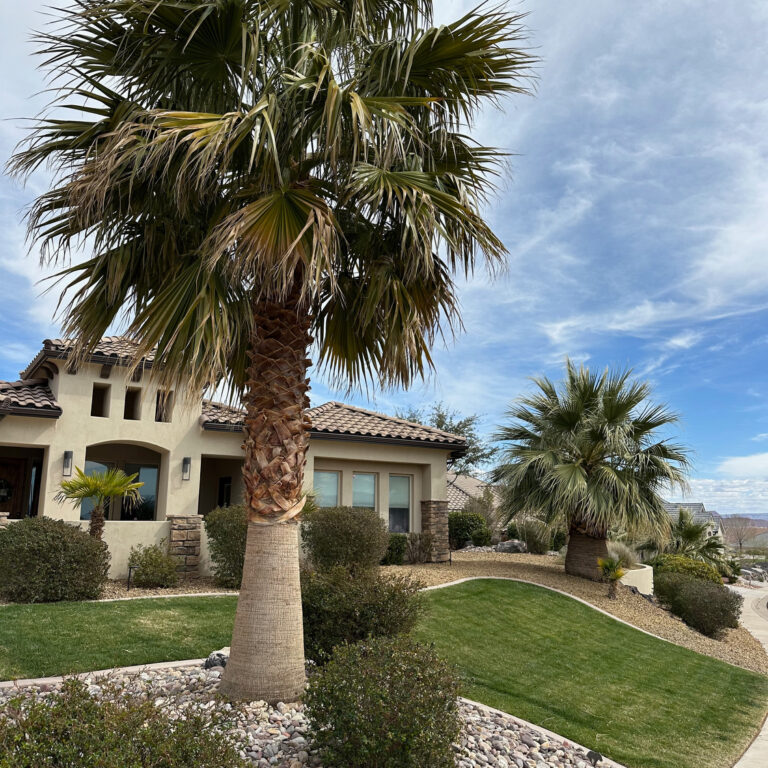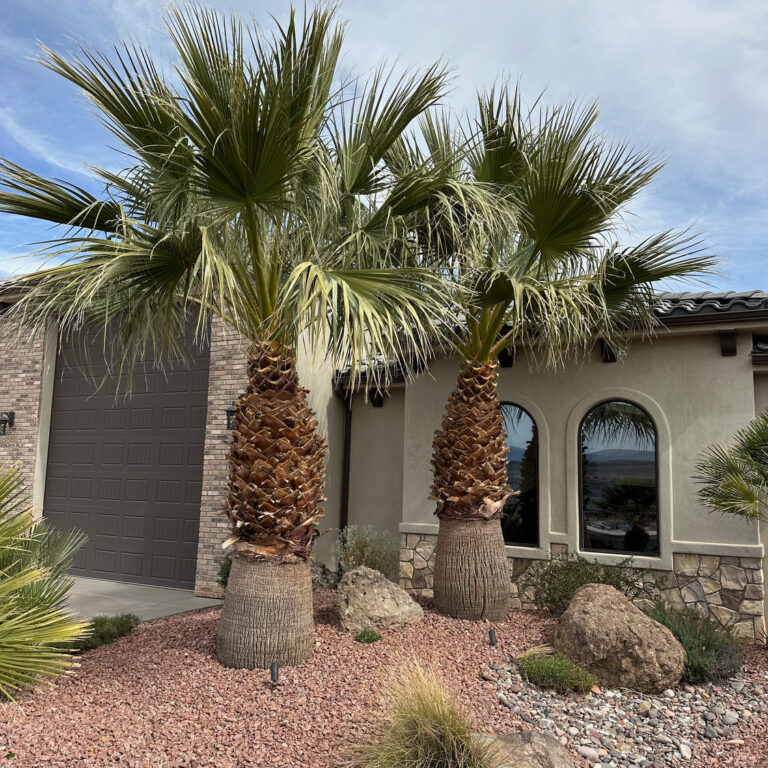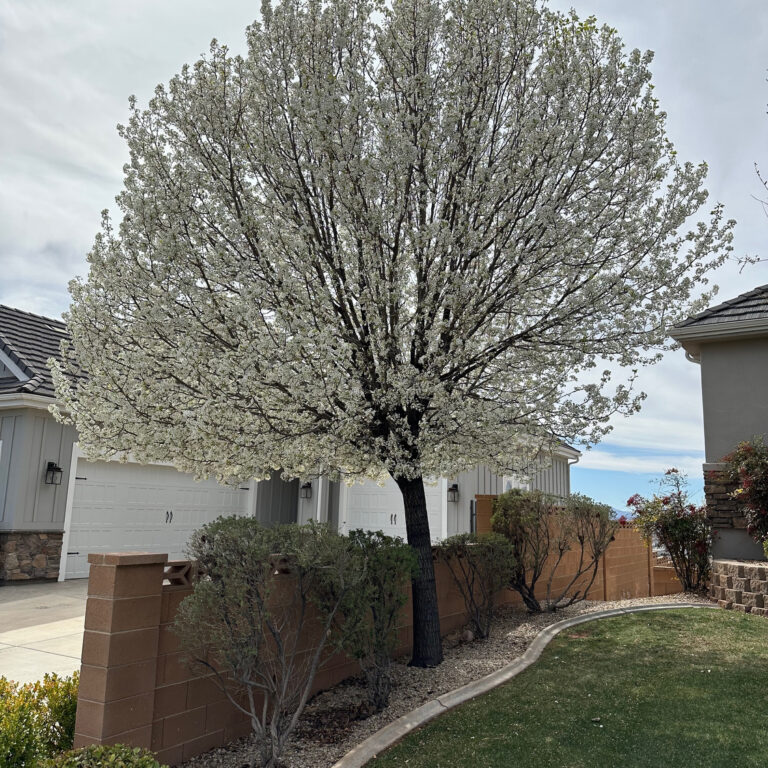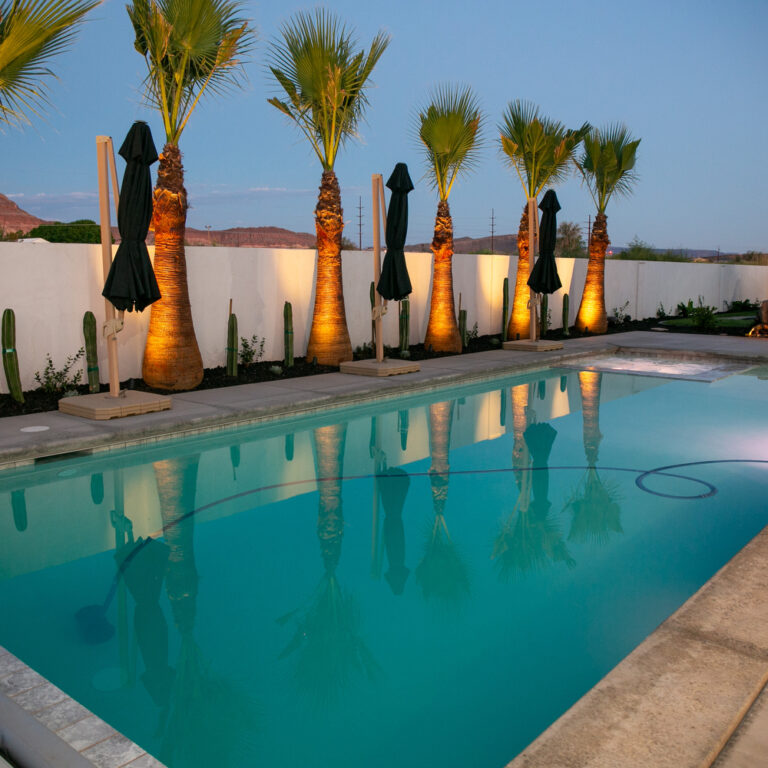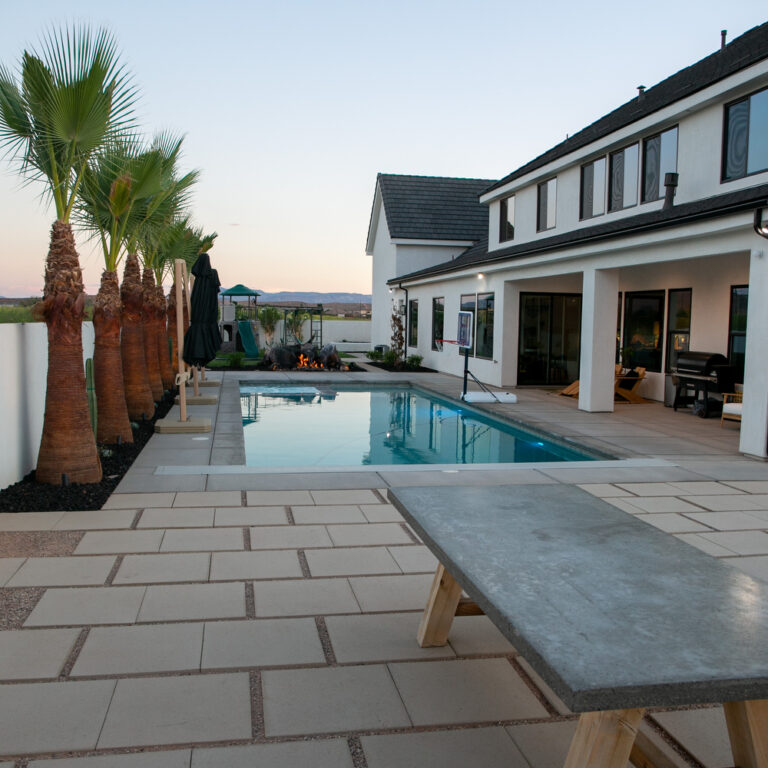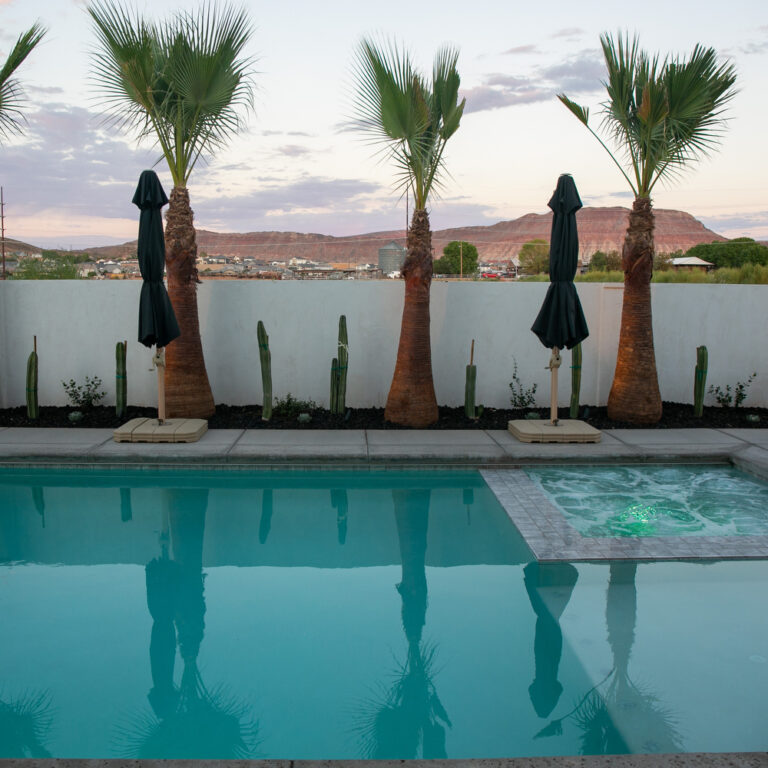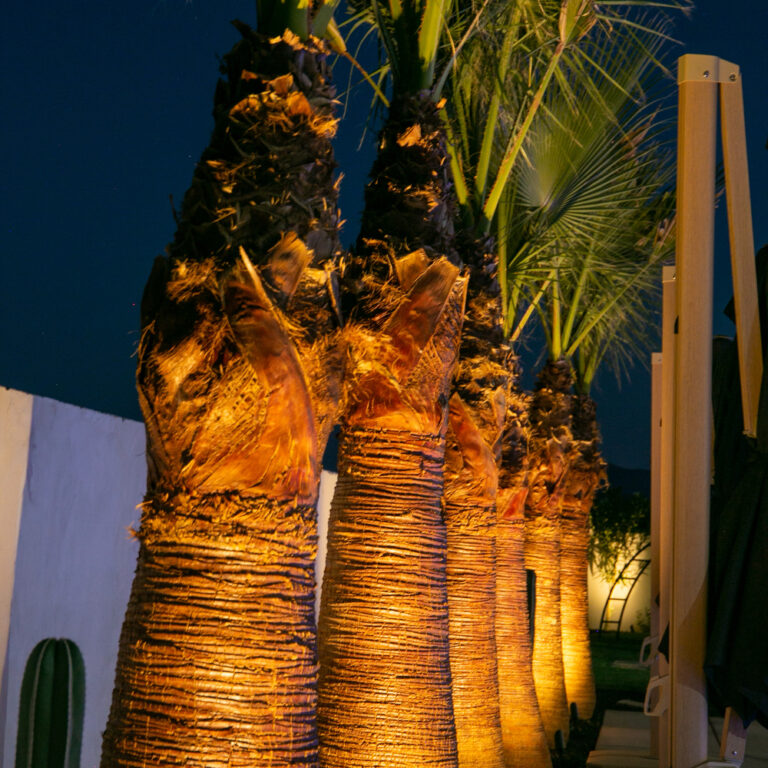What Shade Trees, Palm Trees, and Flowering Trees Will Thrive in a St. George Landscaping Project?
Drought and Heat Tolerant But Also Hardy Enough to Survive an Occasional Freeze
St. George landscaping tree projects are particularly challenging because of the unique climate we live in. Here on the border between the Colorado Plateau and the Mojave Desert ecosystems, we are faced with hot summers but the chance of extended freeze in the winter also exists.
As of 2023, most of the St. George Area is located in the 8b zone on the USDA plant hardiness map. However, there are areas of Washington County that range as low as zone 6a. This means our area can see average annual extreme minimum winter temperatures ranging as low as -5°F to 0°F and as high as 20°F to 25°F.
Couple those wide-ranging potential low temperatures in winter with an average temperature over 100°F in July in St. George and humidity rarely above 40 percent and it quickly becomes apparent that it takes a hardy plant to survive and thrive in southern Utah.
When selecting St. George landscaping trees consider the following:
- Know the mature size of the tree relative to the given space.
- Know the shape characteristics of the tree – i.e., low branching, multi-trunked, etc.
- Give adequate clearance to roof eaves, utilities above and below ground, walkways and driveways.
- Know the water requirements of the tree before determining location.
- In groupings, create diversity of species to provide year-round interest and interesting composition.
- And choosing trees that will provide shade in a St. George Landscape tree planting project, survive the heat of a southern Utah summer and won’t be killed off when temperatures dip below freezing is key.
St. George Landscaping Tree Guide
There are a large number of native and non-native trees that will do well in the St. George summer heat and occasional winter freeze.
If you have questions about any of these trees, give us a call! We can help you find the perfect tree for your specific area of southern Utah.
These are just a few of our favorites. Check back often as we’ll continue to update this list.
Palm Trees
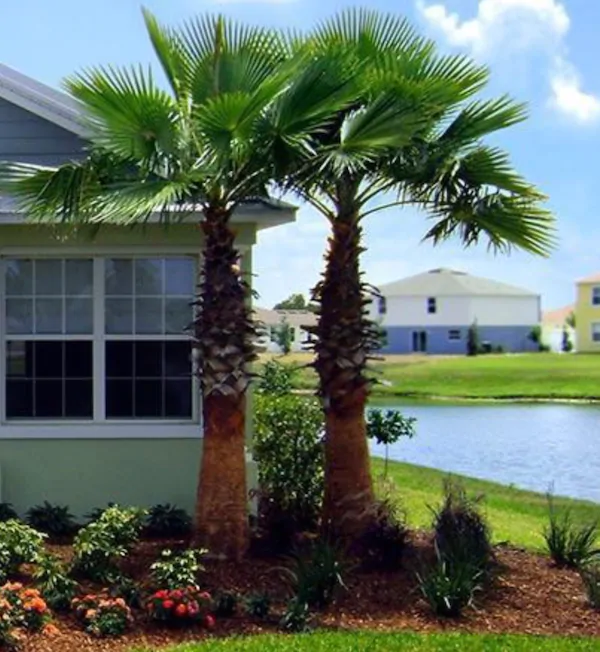
Mexican Fan Palm
Very fast growing, taller, more slender-trunked palm to ±80 feet. Hybridizes with California Fan Palm to create palms with both parent traits. Takes poor soil and drought. Prune fronds only when completely brown.
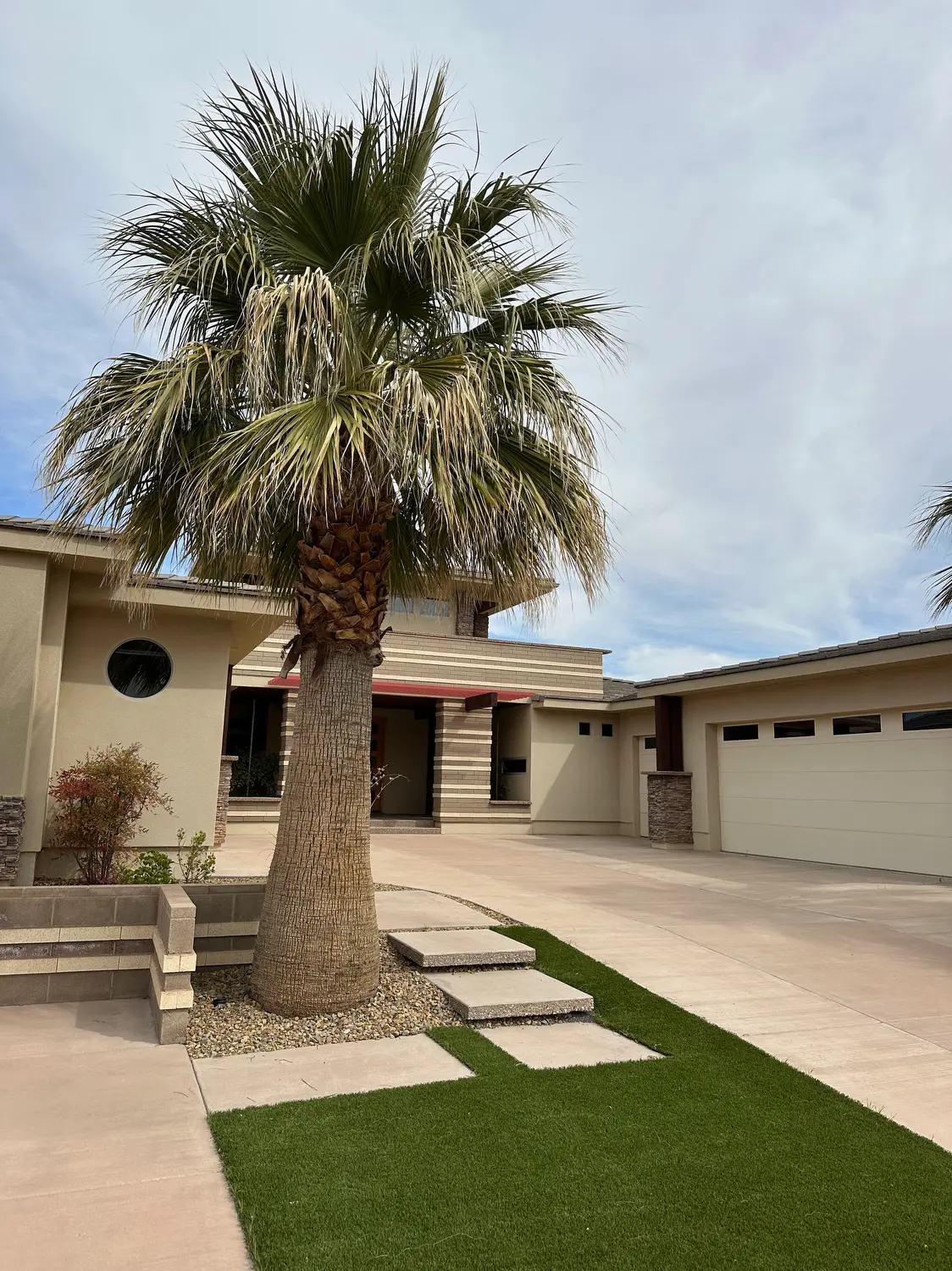
California Fan Palm
Grows moderately to ±40 feet. Green fronds form wide sprays from crown. Takes heat and drought, but thrives in moist, well-drained soil. Has much thicker trunk than Mexican fan palm – give it some room. Prune fronds only when completely brown.
Medium Sized Trees and Decorative Fruit Trees
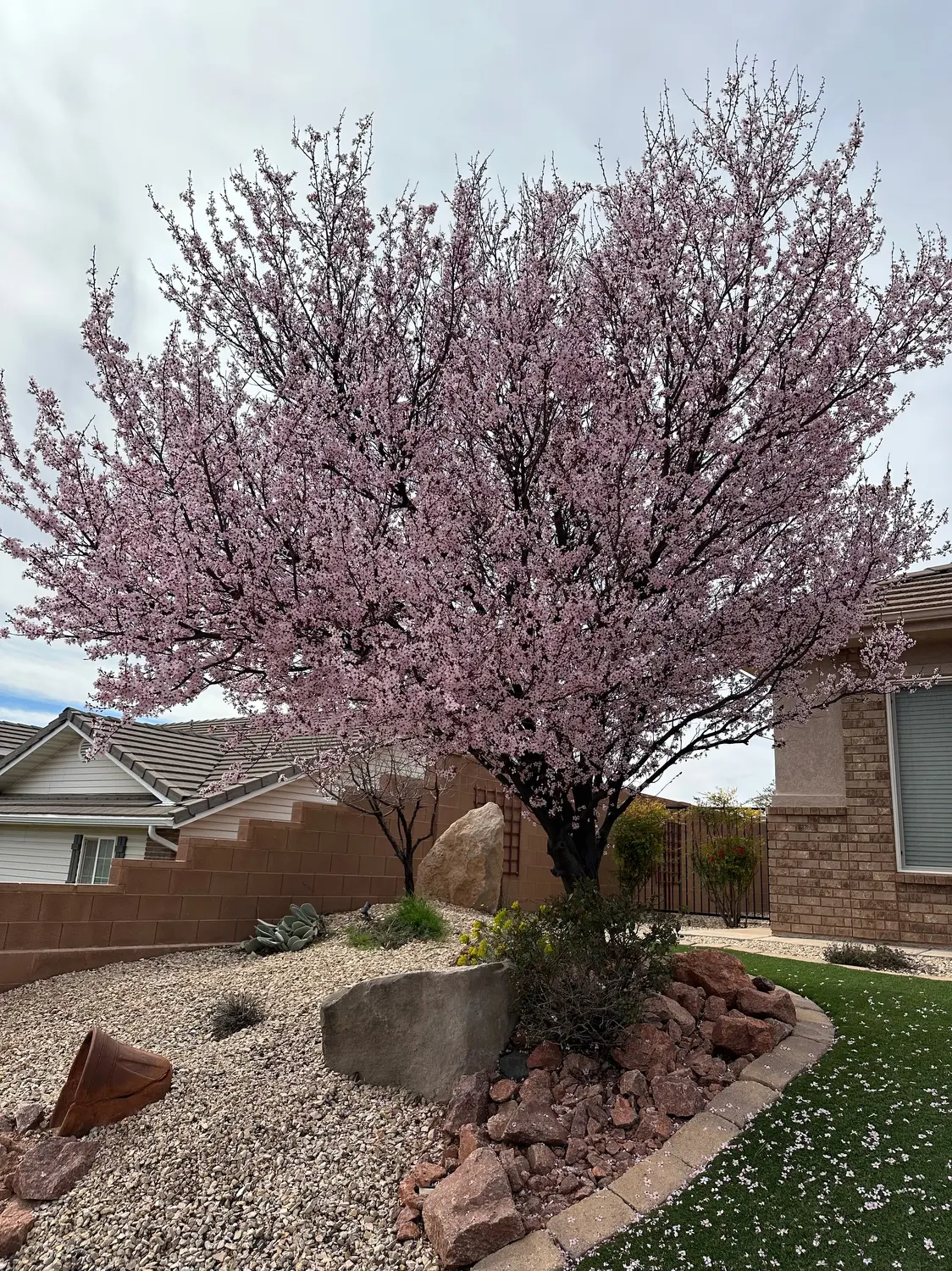
Flowering Plum
‘Krauter vesuvius’ Decorative tree to 18 x 12 feet is darkest of fruitless, flowering plums.
Has pink flowers in March, followed by deep burgundy-purple leaves which hold color throughout the season. Super landscape accent. Full sun, amended soil, good drainage, and moderate water.
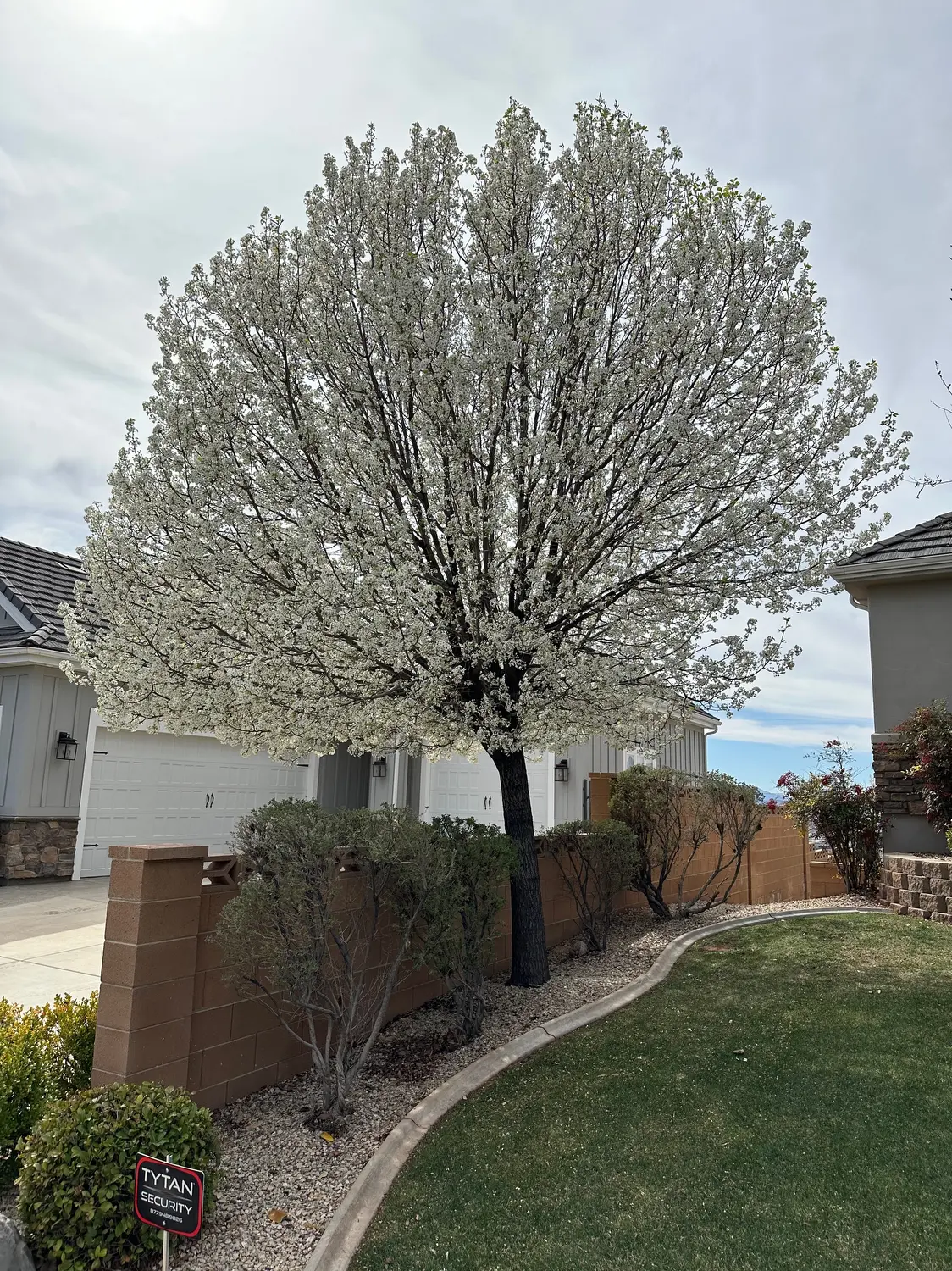
Bradford Pear
Pyrus calleryana
The Callery pear or Bradford pear, is a species of pear tree native to China and Vietnam, in the family Rosaceae.
It is most commonly known for its cultivar ‘Bradford’ and its offensive odor, widely planted throughout the United States and increasingly regarded as an invasive species. Pyrus calleryana is deciduous, growing to 5 to 8 m tall, often with a conical to rounded crown. The leaves are oval, 4 to 8 cm long, glossy dark green above and pale beneath.
Large Shade Trees
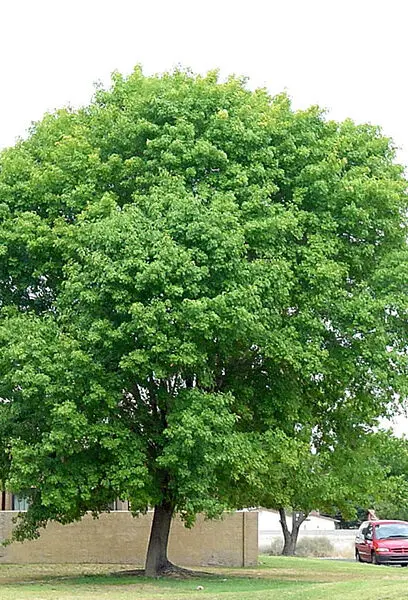
Arizona Ash
Arizona Ash is a fantastic shade tree with an attractive rounded shape in maturity, providing (relatively) cool shade in summer. However, it is a large tree, and if you have an aversion to picking up leaves in the autumn, it might not be the best tree for you.
Leaves are compound with 5 to 7 medium green leaflets that vary from elliptical to lance-shaped with lightly serrated margins. The leaflets tended to have slightly fuzzy undersides and a velvet feel when young, becoming smoother as they mature (though the undersides may remain fuzzy). Has a pleasing golden yellow autumn color.
Needs deep watering a couple of times a month, especially the first year, to encourage the roots to stay below the surface. Water at the edge of the canopy on a slow trickle for several hours. Prune for shape and to provide good branching structure. Naturally grows in canyons and large washes with a perennial source of water.
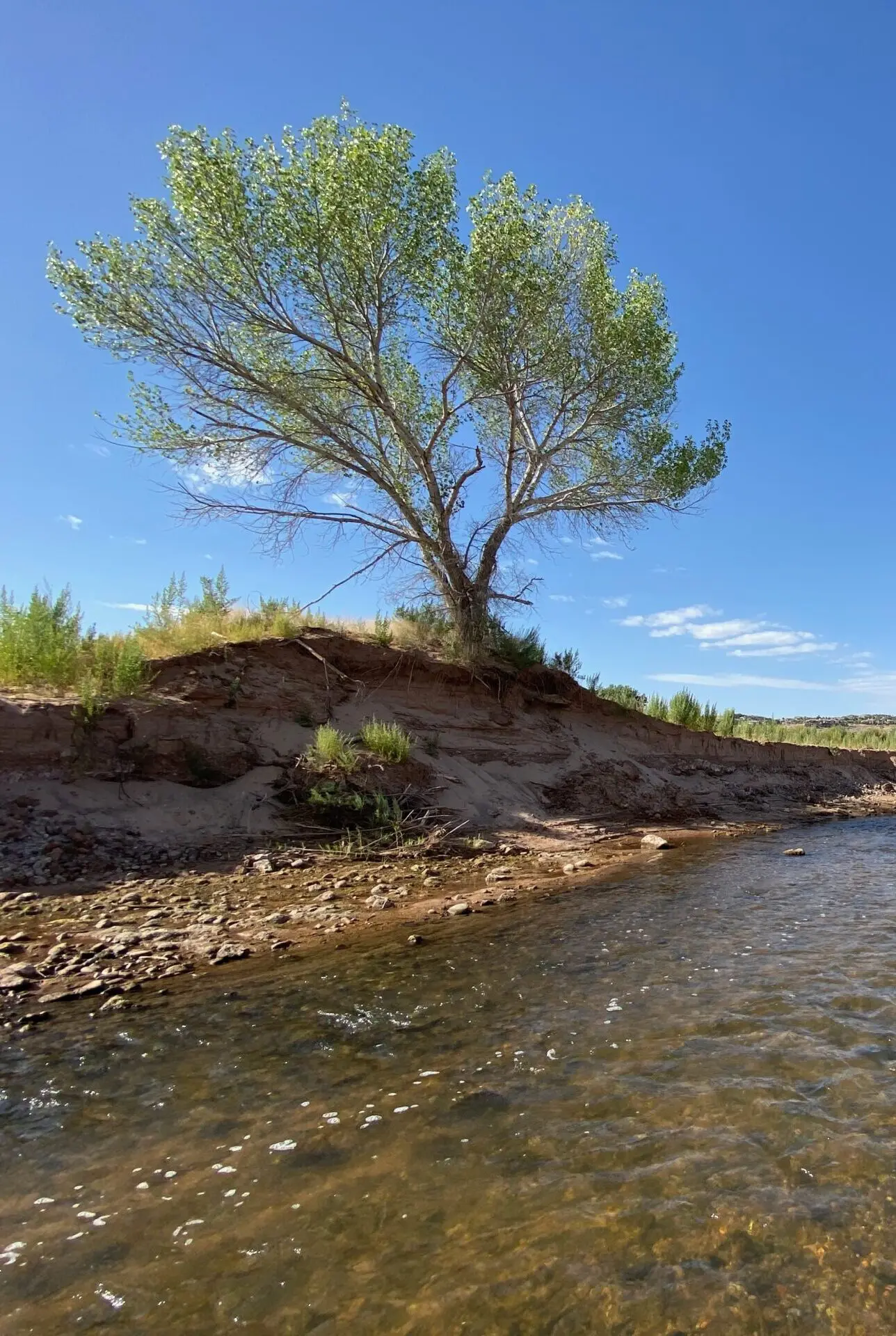
Freemont Cottonwood
Populus fremontii
Freemont cottonwood trees can be an amazing addition to a southern Utah landscape providing excellent shade but these large trees require a great deal of room.
They are native to southern Utah and can be found all along the Virgin River.
One of the fastest-growing trees, Fremont Cottonwood grows at a rate of 10 to 20 feet per year, reaching a height of up to 90 feet at maturity. The tree’s main trunk may reach 48 inches at the base, although, in the Fremont region, the cottonwood tree has a base of between 24 and 35 inches.
Its large, wide-spreading limbs start to leave the trunk near the ground, resulting in a broad crown, often as wide as the tree is high, with the average crown spread being 60 feet. The tree is capable of reproducing both vegetatively and from its seeds.

